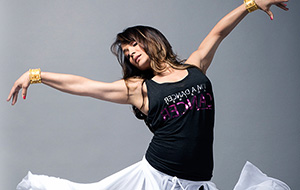 On the dance competition circuit particularly, many competitors can be seen attempting dance moves and combinations beyond their ability, decreasing the value of their performance in the process. For many competition judges, they would prefer to see something simpler performed with greater artistry and skill, than something beyond the capability of the dancer on stage. Teachers may challenge their students in class with complex sequences in order to extend their skills, however on the stage it can be viewed as messy and amateur when it is not performed correctly.
On the dance competition circuit particularly, many competitors can be seen attempting dance moves and combinations beyond their ability, decreasing the value of their performance in the process. For many competition judges, they would prefer to see something simpler performed with greater artistry and skill, than something beyond the capability of the dancer on stage. Teachers may challenge their students in class with complex sequences in order to extend their skills, however on the stage it can be viewed as messy and amateur when it is not performed correctly.
As a result, many may argue difficulty should not come before the execution of a dance move. There is no doubt that competitions demand more and more from competing dancers, but ultimately it is more important to execute the dance well, with correct technique and high quality, rather than struggle with something the teacher has given the student that is too challenging. Dance on the commercial side of the industry continues to want dancers that are stronger, faster and that can kick higher yet this can come at the cost of injury, and other dancers replicating this too.
Many students attempt movements they have seen other, perhaps older dancers perform, and long before their coordination and strength is properly in place in order to support them. Dancers’ bodies need time and repetition to successfully develop technique and skill, and often dancers can experience bad habits and injuries that plague their bodies as a result from being pushed too fast and sidestepping vital technical training.
In order to safeguard younger dancers against injury and incorrect training, the majority of teachers and competition judges would much prefer to see simpler, cleaner lines and steps onstage in choreography than tricks. Adequate dance training is key to achieving and performing.
